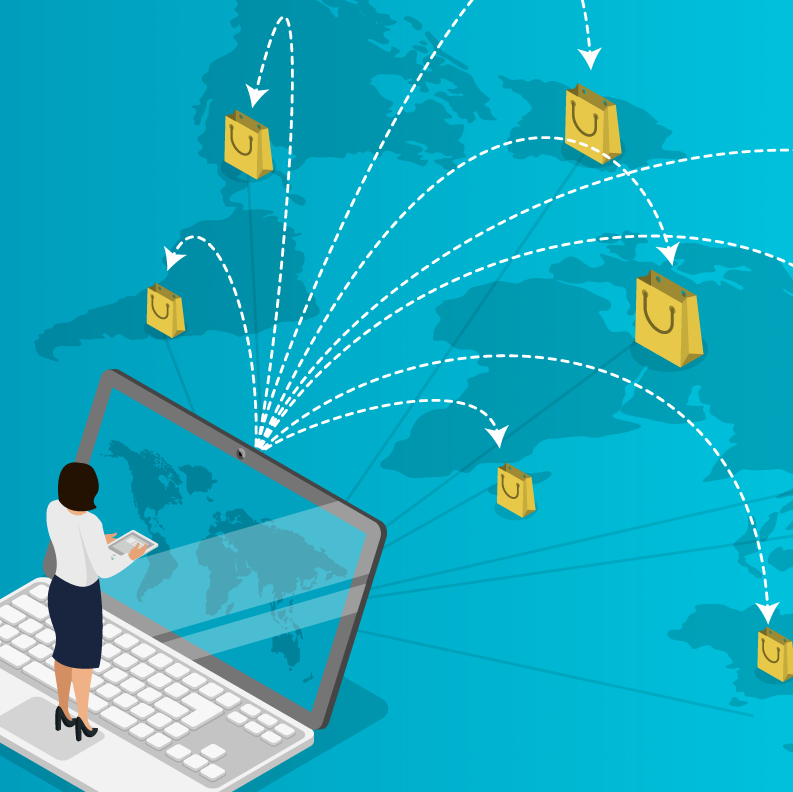It’s no secret that consumers want to buy directly from their favorite brands. But have you heard how fast this trend is growing?
A full third of consumers now plan to do at least 40% of their shopping with direct-to-consumer companies in the next five years. Given the choice between a multi-brand retailer and a brand manufacturer, 59% will opt to buy from the latter.
The game is clearly changing. In response, a growing number of manufacturers are looking beyond traditional first-party and wholesale relationships to consider other options for reaching consumers.
At the top of the list are e-commerce marketplaces — and for good reason. The vast array of options for selling third-party on Amazon and eBay alone make them very enticing channels. So if you’re thinking about moving toward a direct-to-consumer marketplace model, there’s never been a better time to make the transition.
However, as with any big shift toward a D2C digital commerce strategy, it’s critical to first examine if (and when) it’s the right time.
For Direct-to-Consumer Success, Timing Is Everything
Make no mistake: Selling third-party on Amazon, eBay and other e-commerce marketplaces can be highly profitable. In addition to unlocking a treasure trove of valuable data, D2C sellers gain greater control over the consumer experience, product pricing, distribution channels and more.
But there is a catch.
You have to be ready to embrace the full scope of marketing, selling and fulfilling. Third-party marketplace selling requires more time and resources, and might make it necessary for you to outsource operations and hire more staff.
We’ve seen many manufacturing brands leap head first into the brave new world of direct-to-consumer sales without first building a plan of action, only to discover later that they missed a crucial step in the process. Rushing the process can result in damaging reviews, inaccurate sales projections and other costly consequences.
On the other hand, when manufacturers take the time to really understand consumer expectations, the result is long-term, lasting loyalty.
So, how can you decide when the time is right for your company? Let’s take a quick look.
3 Telltale Signs It’s Time to Consider a D2C Marketplace Model
Based on our experiences with more than 2,800 sellers, we’ve identified several strong indicators that you should absolutely be thinking about selling directly to consumers.
- Marketplaces won’t carry all of your products.
If Amazon, eBay and other marketplaces are only carrying part of your product line, third-party selling can be a great way to get more listings in front of consumers. If this is a challenge you’re facing, you might choose to continue the wholesale relationship on some products and open a seller account for items the marketplace isn’t selling. We call this the “hybrid” approach. It can be an effective method for ramping up your D2C business while maintaining a steady stream of revenue through first-party sales on Amazon.
- You’ve been losing brand equity.
Some manufacturers face constant battles with third-party merchants that don’t properly represent products or honor pricing. For others, rogue items are the real problem on e-commerce marketplaces: As much as 20% of products purchased on Amazon, Walmart, eBay, Sears and Newegg have been found to be counterfeit despite strict “zero tolerance” policies. If you’re facing similar challenges, there’s no better way to regain control than through your own branded marketplace presence.
- Relying solely on retailers is no longer profitable.
Though becoming a third-party seller may not be for everyone — again, this transition is a big one — there’s tremendous revenue potential for the manufacturer willing to invest in the full scope of D2C sales. After taking time to ensure a successful launch on one marketplace, many brands are surprised at just how easy it is to expand to additional channels. We’ve heard from countless direct-to-consumer marketplace sellers who have experienced as much as 70% year-over-year growth after expanding their marketplace presence.
Do these scenarios ring true for your company? If so, you’ll be glad to know that we’re working on a full series to help guide manufacturers in making the transition to direct-to-consumer marketplace selling. Even if you’re not ready to make the move yet, this is the perfect time to start preparing. With the industry changing at a rapid pace, remaining nimble is the best way to maintain a competitive edge.
—
Would you like to be updated with the next installment in this series? Subscribe to the Rithum blog here. Future posts will look at essential elements for marketplace success, common pitfalls to avoid and more.
Want more information on selling D2C on marketplaces? Download your free copy of our eBook The Manufacturer’s Guide to Marketplace Selling: Making A Successful Transition to the D2C Model .



